Part 2: When 237K Views in 22 Hours Can’t Hide the Interface Safety Crisis
Meta just proved they can make accessibility content go viral—their Display announcement hit 237K views in under 24 hours. So why does their dedicated accessibility video languish at 8,600 views, whilst their marketing completely ignores the interface safety challenges that could turn their breakthrough into a liability?
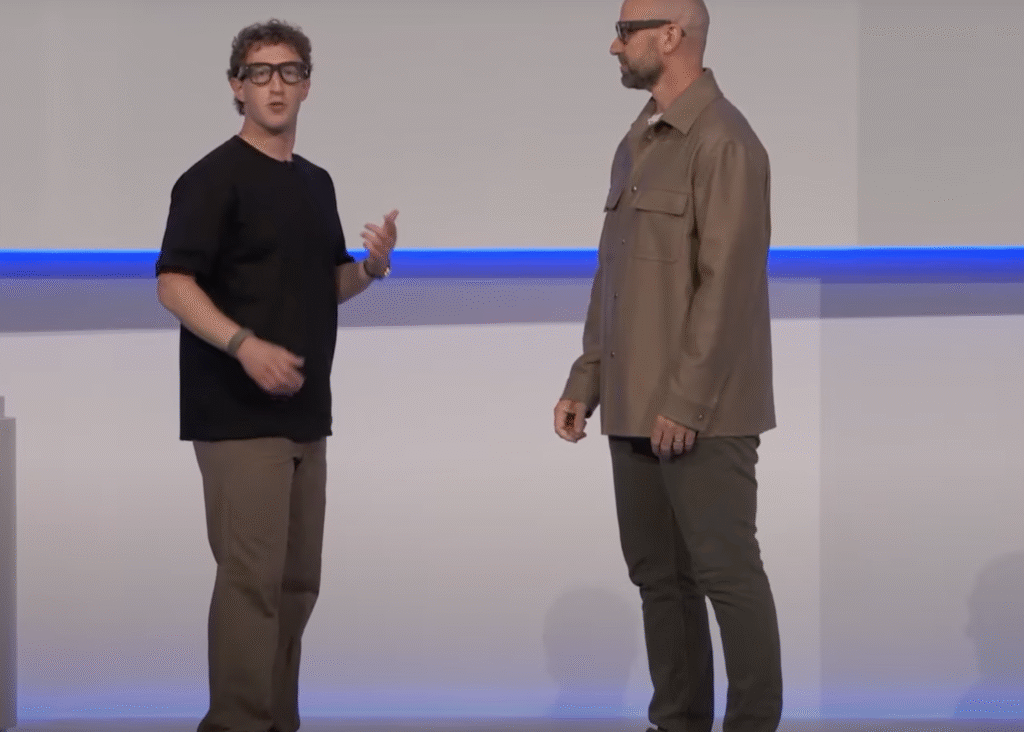
The revelation that changes everything: Latest YouTube analysis reveals Meta’s true capability. With 69.9K subscribers and 290 videos, their dedicated Ray-Ban channel consistently creates viral content—celebrity partnerships hit six figures, educational tutorials perform brilliantly, and their latest Display announcement achieved massive engagement immediately. This makes their systematic accessibility neglect and complete interface safety avoidance inexcusable strategic malpractice.
The Tale of Two Strategies: Viral Mastery Hiding Critical Blindness
Connect 2025: Improved But Still Underwhelming
Meta’s main channel “Connect 2025 Recap” managed 6.7K views—better than initially reported but still underwhelming for a company announcement about revolutionary assistive technology. The tagline “We go together like AI and glasses—is that not an expression? It will be” represents corporate messaging designed to offend no one whilst engaging nobody.
Ray-Ban Meta Channel: Proven Viral Capability
But examine @raybanmetaofficial, and the transformation is extraordinary:
Recent Performance Explosion (September 2025):
- “Meet the World’s Most Advanced AI Glasses | Meta Ray-Ban Display @ Connect 2025“ → 237K views in 22 hours
- “Unboxing Meta Ray-Ban Display AI Glasses + Meta Neural Band” → 27K views in 13 hours
- Channel growth: 68.1K to 69.9K subscribers (1,800+ new subscribers)
Historical Viral Successes:
- “New Features & Updates You Need to See” → 441K views
- “Hey Meta, Who Eats Art? Ft. Chris Hemsworth, Chris Pratt and Kris Jenner” → 343K views
- “5 Mistakes Everyone Makes with Ray-Ban Meta Glasses” → 322K views
- “Ray-Ban Meta Transition® Lenses: Everything You Need to Know” → 214K views
The smoking gun: “How Ray-Ban Meta Are Changing Accessibility | Be My Eyes” → 8,600 views after four months
“Meta just proved they can make accessibility content achieve 237K views in 22 hours—which makes their systematic underinvestment in accessibility advocacy and complete avoidance of safety education strategic malpractice on an extraordinary scale.”
The UX/UI Safety Crisis Meta Won’t Address

The Cognitive Load Problem Nobody Discusses
Here’s the uncomfortable truth Meta’s viral marketing carefully avoids: smart glasses with comprehensive accessibility features can become cognitively overwhelming and potentially dangerous. The very richness that makes them transformative creates interface complexity that could turn independence machines into hazards.
The Feature Density Dilemma:
- Live captioning overlaying visual field during conversations
- Real-time translation competing for attention with environmental awareness
- Voice command feedback interrupting natural audio experience
- Neural band gestures requiring muscle memory whilst being sensitive to accidental activation
- AI contextual information potentially contradicting user’s own observations
The Interface Safety Crisis: Real-World Consequences
Scenario: The Cyclist’s Dilemma
A user cycling whilst using live translation encounters an unexpected caption overlay at eye level whilst approaching an unsignalled turn. Their attention shifts from road to text, causing them to drift and nearly collide with a curb.
But micro-gestures create additional dangers:
- Temple rub after overlay glitch → glasses misinterpret as “capture video,” activating bright LED mid-ride
- Head tilt to adjust frames → accidental live translation activation overlaying foreign text at eye level
- Involuntary eye twitch during concentration → unexpected interface changes disrupting focus during critical tasks
Every micro-gesture can trigger unintended actions when interfaces designed for controlled environments meet real-world complexity without appropriate safeguards.
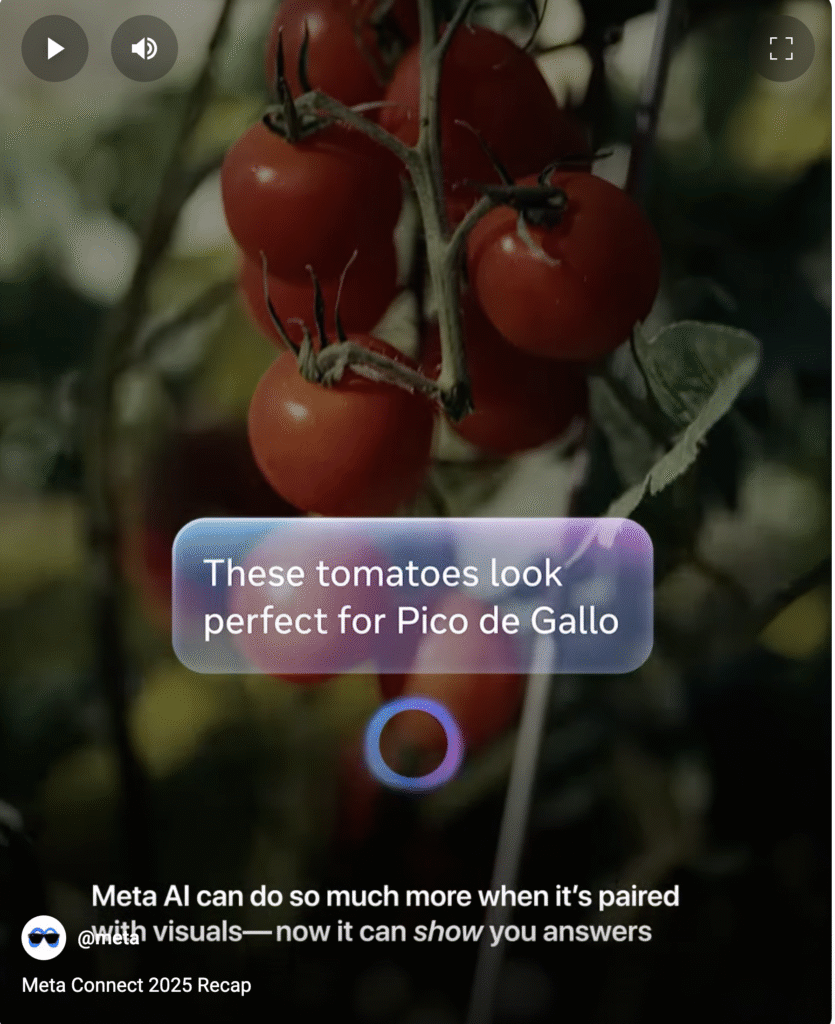
The Missing Safety Framework
What Meta’s 290 videos never address:
- Context-aware interface reduction during motion-critical activities
- Smart gesture locks preventing accidental activation during routine movements
- Emergency override protocols for instant interface clearing
- Attention management strategies for overwhelming information scenarios
- Progressive feature adoption rather than overwhelming complexity
This represents safety responsibility abdication that could undermine their entire accessibility positioning when the first serious incident occurs.
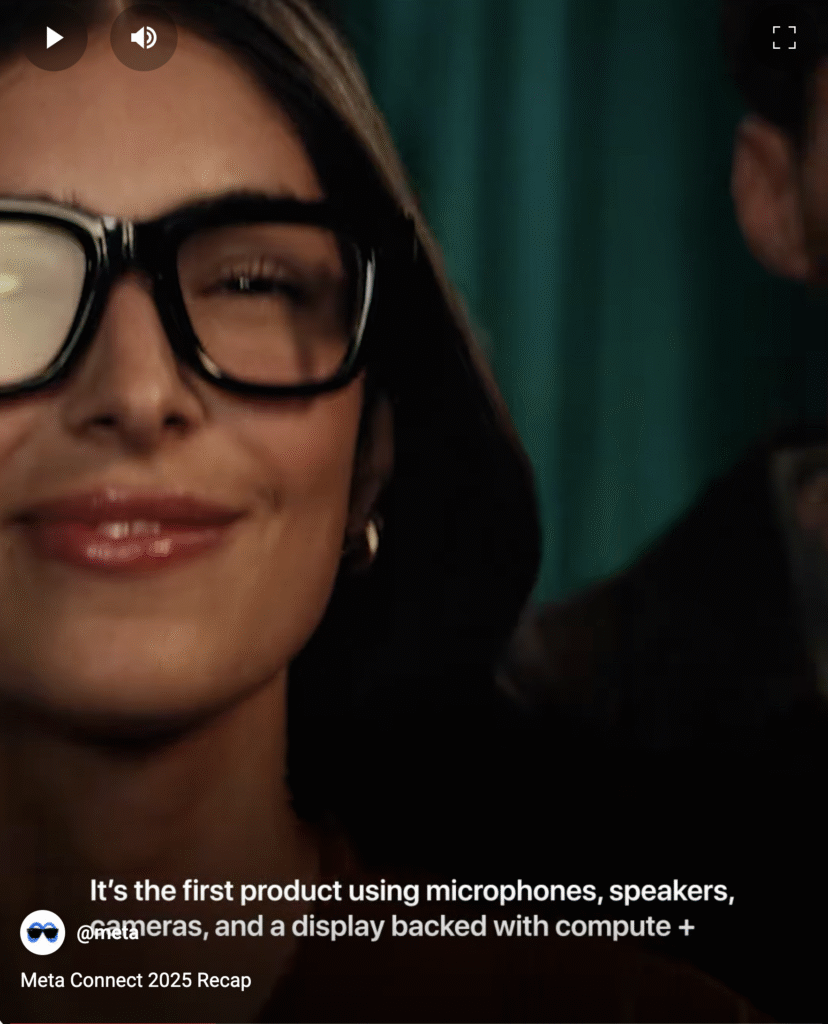
The Performance Hierarchy That Reveals Everything
What Viral Success Actually Proves
Meta’s content creation mastery:
- 69.9K subscribers proving sustained community building
- 290 videos demonstrating consistent content commitment
- Multiple 200K+ successes showing viral capability
- Educational content excellence with setup tutorials hitting 76K views
- Celebrity integration sophistication creating authentic endorsements
The strategic malpractice evidence:
- Display announcement: 237K views in 22 hours (proves accessibility can go viral)
- Celebrity art pranks: 343K views (entertainment gets maximum promotional support)
- Common mistakes guide: 322K views (educational content performs brilliantly)
- Accessibility transformation: 8.6K views (systematic deprioritisation despite being most compelling)
Cross-channel analysis reveals systemic bias:
- Ray-Ban Meta channel Display video: 237K views
- Main Meta channel same content: 1.8K views
- Dedicated channel massively outperforms when they choose to invest
The Capability vs Priority Crisis
They possess every capability needed:
- Proven viral content creation expertise
- Celebrity partnership pipeline for authentic endorsements
- Educational content mastery for user guidance
- Professional production standards and consistent branding
- Platform algorithm understanding for optimisation
But systematically underinvest in:
- Accessibility transformation stories (most emotionally compelling)
- Interface safety education (most responsibility crucial)
- Disability community partnerships (most loyal advocates)
- Real-world usage complexity (most honest guidance)
What They Excel At: The Viral Formula Mastery
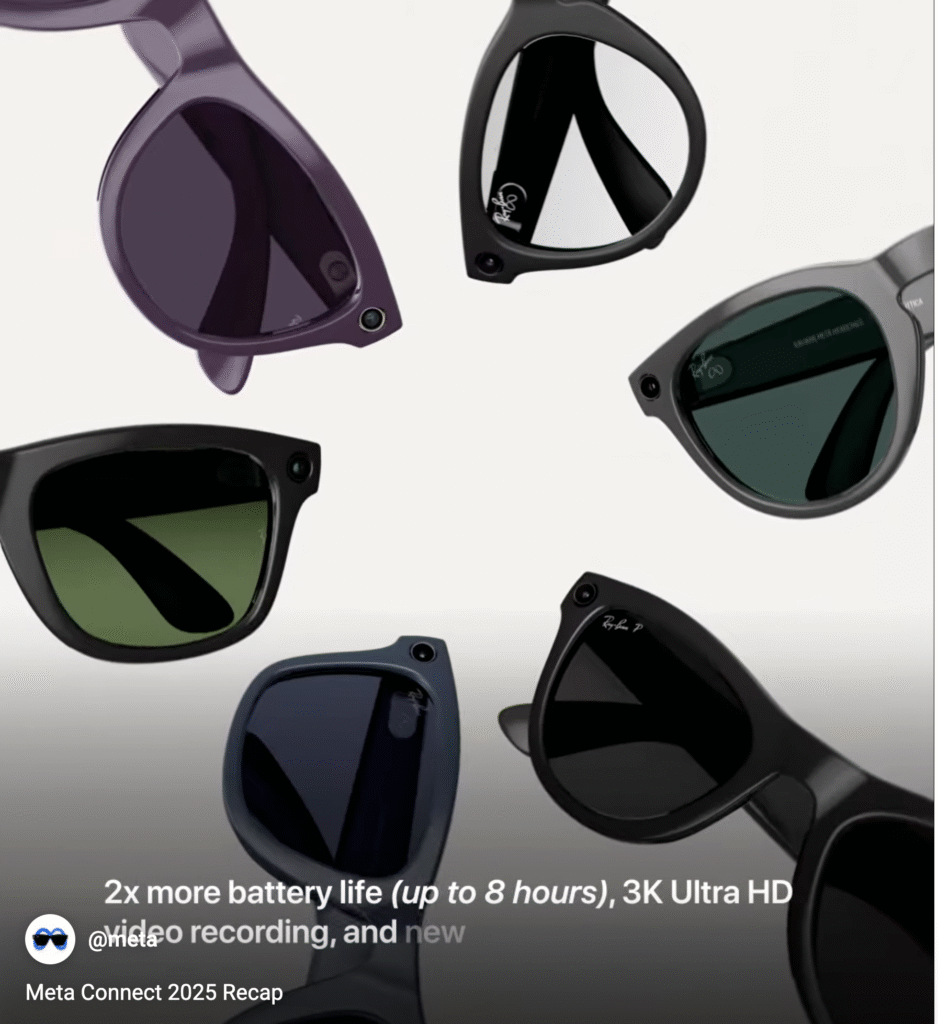
Celebrity Integration Excellence
The Chris Hemsworth collaborations demonstrate sophisticated personality-driven content. Rather than stiff product placements, they created entertaining scenarios where smart glasses feel natural—exactly the approach needed for accessibility advocacy but applied to art pranks instead.
Educational Content That Actually Works
“5 Mistakes Everyone Makes” (322K views) proves they can create engaging instructional content addressing genuine user challenges. This formula should apply to interface safety and accessibility customisation but mysteriously doesn’t.
“Ray-Ban Meta Transition® Lenses” (214K views) successfully translates complex technology into user benefits—exactly the capability needed for safety education and accessibility interface management.
The Production Quality Standard
Professional standards across 290 videos:
- Consistent visual branding and clear audio
- Engaging thumbnail design optimisation
- Platform-specific format understanding
- Community engagement through responses
All capabilities that should extend to safety education but don’t.
The Interface Complexity Communication Gap
Current Marketing vs Reality
Current approach:
“These glasses seamlessly integrate AI assistance into your daily life”
Reality-based alternative:
“These glasses require learning new interaction patterns and understanding when not to use certain features for safety”
What’s completely absent from 290 videos:
- Interface customisation tutorials for different disability needs
- Safety-first feature management for various activity contexts
- Cognitive load reduction strategies during overwhelming scenarios
- Context-aware usage guidance for hazardous environments
The Customisation Paradox
Different users need conflicting optimisations:
- Visual impairment users require audio-heavy interfaces that might overwhelm hearing-impaired users
- Mobility-limited users depend on voice commands creating privacy concerns in professional settings
- Hearing-impaired users need visual overlays that could distract users with attention processing differences
- All users need safety protocols preventing interface conflicts during dangerous activities
Meta’s viral content proves they understand user guidance—they choose not to apply this to safety and accessibility customisation.
The Cross-Channel Strategy Analysis
Ray-Ban Meta vs Main Meta Channel Performance
Smart glasses content performance comparison:
- Ray-Ban Meta Display announcement: 237K views (massive success)
- Main Meta Display video: 1.8K views (poor performance)
- Ray-Ban Meta “Remembering Where You Parked”: 64K views (solid educational content)
- Main Meta various smart glasses Shorts: 3-10K views typical
This proves dedicated channel strategy works when they choose to invest properly—making accessibility neglect more inexcusable.
Content Strategy Bifurcation
Dedicated Ray-Ban channel gets:
- Celebrity partnership budgets for entertainment content
- Professional production values and promotional support
- Cross-platform amplification and algorithmic investment
- Consistent educational focus building user competence
Main Meta channel treats smart glasses as:
- Afterthought content with minimal promotional support
- Generic tech demonstrations without compelling narratives
- Corporate messaging rather than community engagement
The Safety Education Revolution They’re Avoiding
What Should Be Priority Content
“Interface Safety Fundamentals” Series:
- “When NOT to Use Your Ray-Ban Meta Features” (activity-specific safety)
- “Managing Information Overload: Smart Interface Reduction” (cognitive load management)
- “Gesture Sensitivity: Preventing Accidental Activation” (micro-movement safety)
- “Emergency Interface Reset: Getting Back to Basics” (crisis protocols)
“Progressive Mastery with Safety” Educational Content:
- “Week 1 with Ray-Ban Meta: Learning Curve Reality” (honest expectations)
- “Customising for Your Safety and Needs” (personalised configuration)
- “Advanced Interface Control with Context Awareness” (expert safety management)
The Industry Leadership Opportunity
Rather than hiding interface complexity, Meta should:
- Lead industry discussion about responsible feature deployment
- Establish safety education standards for complex assistive interfaces
- Develop safety protocols for multi-modal interaction systems
- Create best practices for cognitive load management
This would position Meta as accessibility safety pioneer rather than leaving them vulnerable when complexity inevitably causes problems.
Content Strategy Revolution: Safety-Aware Accessibility First
Immediate Priority Restructuring
Month 1: Safety-Integrated Celebrity Partnerships
Partner celebrities with authentic disability connections showing both transformation potential and safety awareness. Apply celebrity partnership budgets to accessibility showcasing with interface safety education.
Month 2: Educational Series with Safety Reality
Deploy proven educational formats to safety and accessibility:
- “5 Interface Safety Rules for Smart Glasses Users”
- “Everything You Need to Know About Responsible Feature Usage”
- “10 Accessibility Customisation Tips That Prevent Overwhelming Complexity”
Month 3: Real User Safety Documentation
Create content showing actual accessibility users adapting to interface complexity whilst maintaining safety consciousness in various environments.
The Honest Capability Approach
Instead of marketing perfection:
- Learning curve acknowledgment with gradual competence development
- Safety trade-offs discussion requiring conscious user decisions
- Context-specific usage guidance acknowledging when features become inappropriate
- Interface mastery progression over weeks rather than minutes
This builds trust through vulnerability whilst establishing Meta as responsible accessibility leader.
How I Would Approach This Differently
Safety-First Content Philosophy
Every piece of content should answer:
- “How does this technology change someone’s life?” (transformation focus)
- “When should you NOT use this feature?” (safety consciousness)
- “How do you customise this safely for your specific needs?” (personalisation reality)
- “What’s the responsible adoption progression?” (honest expectations)
Celebrity Partnership Revolution
Instead of art pranks:
- Athletes demonstrating safe usage during sports activities with disability considerations
- Accessibility advocates showing both benefits and safety protocols
- Real users documenting adaptation journeys with interface safety learning
- Safety experts discussing responsible deployment of complex features
Educational Content With Safety Integration
Transform proven educational capability into:
- Interface safety leadership across assistive technology industry
- Responsible innovation advocacy showing safe complex feature deployment
- User empowerment through honest capability and limitation discussion
- Community building around safe, effective accessibility technology use
The Strategic Realignment Imperative
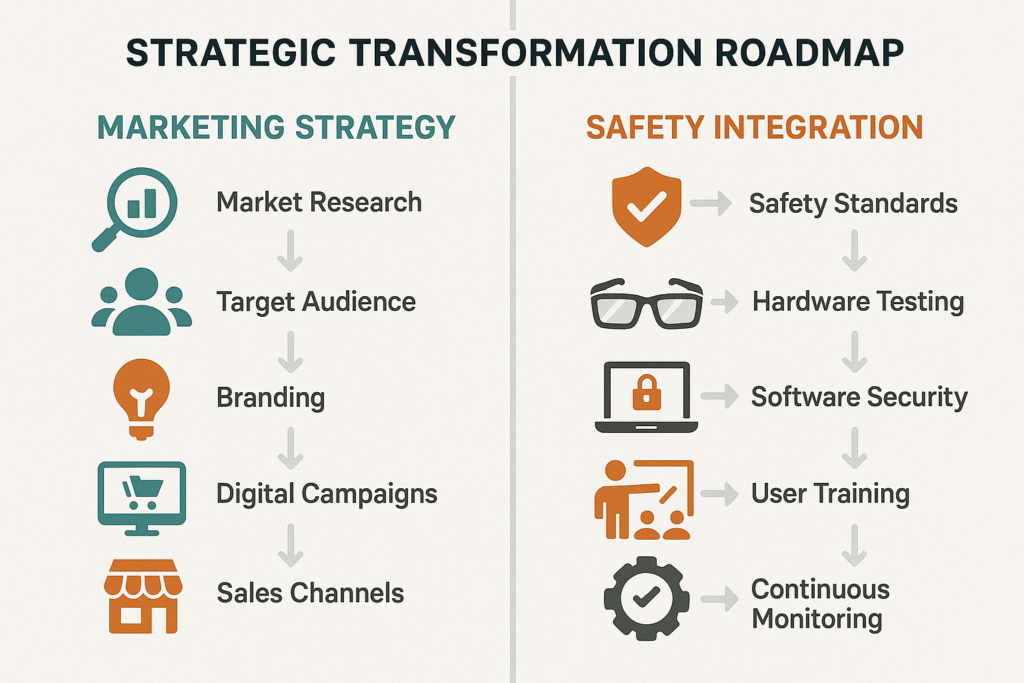
What Current Success Actually Reveals
Meta’s YouTube mastery proves they can:
- Create viral accessibility content (237K views in 22 hours proves this)
- Build engaged communities effectively (69.9K subscriber growth)
- Explain complex technology clearly (educational content consistently succeeds)
- Drive consideration through celebrity partnerships (343K views demonstrates capability)
Their systematic neglect shows they choose not to:
- Apply viral capability to accessibility advocacy consistently
- Address interface complexity and safety honestly
- Build relationships with disability communities proactively
- Create safety education content despite responsibility obligations
The Cross-Channel Evidence
Dedicated Ray-Ban channel success vs main Meta channel underperformance proves focused investment works—making their accessibility and safety content neglect strategic rather than capability-based failure.
The Competitive Differentiation Opportunity
Every major tech company:
- Treats accessibility as compliance obligation
- Avoids interface complexity discussions
- Ignores safety education responsibilities
- Creates clinical rather than empowering content
Meta could own both narratives by:
- Applying proven viral expertise to accessibility transformation
- Leading industry safety education standards
- Building authentic disability community relationships
- Creating empowering rather than clinical accessibility content
The Final Assessment: Viral Mastery Amplifying Strategic Failure
Meta’s YouTube analysis reveals both impressive execution and profound strategic malpractice. They’ve proven they can make accessibility content achieve viral success when they choose to—the Display announcement hitting 237K views in 22 hours demonstrates this conclusively.
The evidence is overwhelming:
- 69.9K subscribers and 290 videos prove sustained capability
- Multiple viral successes demonstrate content mastery
- Educational excellence shows they can guide users effectively
- Celebrity partnerships work for authentic endorsements
- But accessibility languishes at 8.6K views despite transformation potential
- And safety education is completely absent despite interface complexity creating real hazards
The Responsibility They’re Avoiding
When you create viral accessible technology with complex interfaces, you have ethical obligations to:
- Educate users about responsible and safe usage
- Acknowledge limitations and safety considerations honestly
- Provide customisation guidance for different accessibility needs
- Build community understanding of interface complexity trade-offs
Meta’s proven viral capability makes their safety and accessibility neglect inexcusable.
The Strategic Courage Missing
The solution isn’t creating new capabilities—it’s redistributing existing expertise. Take celebrity partnership budgets from art pranks and apply to accessibility transformation with safety integration. Use educational content mastery for comprehensive safety tutorials addressing interface complexity.
Meta possesses everything needed to become the first technology company with authentically engaging accessibility marketing that also provides genuine safety education. The Display announcement’s viral success proves accessibility content CAN achieve massive engagement when properly supported.
The capability exists. The safety need is critical. The accessibility opportunity is enormous. The only missing elements are strategic courage to prioritise transformation over entertainment and safety responsibility over marketing convenience.
Next: Part 3 examines how technological innovation gets constrained by ecosystem development gaps and interface reality that no amount of viral marketing sophistication can overcome.
Continue reading: Part 3: Revolutionary Technology Constrained by Interface Reality
Sources:
[YouTube Analysis] Ray-Ban | Meta Official Channel. (2025). @raybanmetaofficial – 69.9K subscribers, 290 videos, recent performance data
[Cross-Channel Comparison] Meta Official Channel. (2025). @meta – Smart glasses content performance analysis
[Accessibility Performance] “How Ray-Ban Meta Are Changing Accessibility | Be My Eyes” – 8.6K views after 4 months
[Display Launch Success] “Meet the World’s Most Advanced AI Glasses” – 237K views in 22 hours, September 19, 2025
